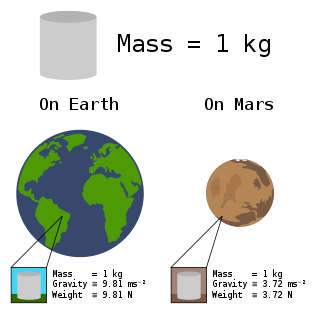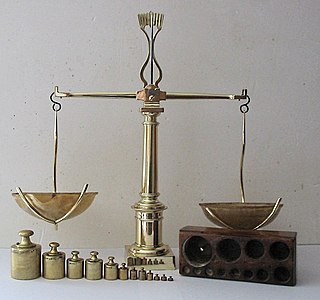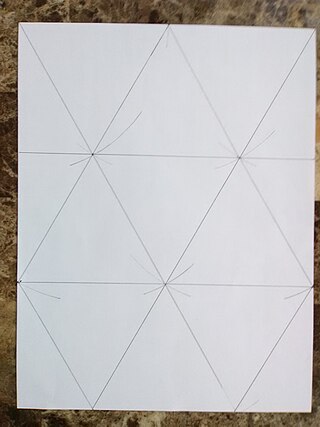
Anubis, also known as Inpu, Inpw, Jnpw, or Anpu in Ancient Egyptian, is the god of funerary rites, protector of graves, and guide to the underworld, in ancient Egyptian religion, usually depicted as a canine or a man with a canine head.

The Fahrenheit scale is a temperature scale based on one proposed in 1724 by the European physicist Daniel Gabriel Fahrenheit (1686–1736). It uses the degree Fahrenheit as the unit. Several accounts of how he originally defined his scale exist, but the original paper suggests the lower defining point, 0 °F, was established as the freezing temperature of a solution of brine made from a mixture of water, ice, and ammonium chloride. The other limit established was his best estimate of the average human body temperature, originally set at 90 °F, then 96 °F.
H, or h, is the eighth letter in the Latin alphabet, used in the modern English alphabet, including the alphabets of other western European languages and others worldwide. Its name in English is aitch, or regionally haitch.

Libra is a constellation of the zodiac and is located in the Southern celestial hemisphere. Its name is Latin for weighing scales. Its old astronomical symbol is (♎︎). It is fairly faint, with no first magnitude stars, and lies between Virgo to the west and Scorpius to the east. Beta Librae, also known as Zubeneschamali, is the brightest star in the constellation. Three star systems are known to have planets.
In music, notes are distinct and isolatable sounds that act as the most basic building blocks for nearly all of music. This discretization facilitates performance, comprehension, and analysis. Notes may be visually communicated by writing them in musical notation.

In science and engineering, the weight of an object, is the force acting on the object due to acceleration or gravity.

Aaru, or the Field of Reeds, is the name for heavenly paradise in Egyptian mythology. Ruled over by Osiris, an Egyptian god, the location has been described as the ka of the Nile Delta.
Proto-Esperanto is the modern term for any of the stages in the evolution of L. L. Zamenhof's language project, prior to the publication of Unua Libro in 1887.

A scale or balance is a device used to measure weight or mass. These are also known as mass scales, weight scales, mass balances, and weight balances.

A "Doom painting" or "Doom" is a traditional English term for a wall-painting of the Last Judgement in a medieval church. This is the moment in Christian eschatology when Christ judges souls to send them to either Heaven or Hell.

Letter or ANSI Letter is a paper size standard defined by the American National Standards Institute, commonly used as home or office stationery in the United States, Canada, Chile, Colombia, Costa Rica, Mexico, Panama, Guatemala, the Dominican Republic and the Philippines. It measures 8.5 by 11 inches and is similar in use to the A4 paper standard at 210 mm × 297 mm used by most other countries, defined in ISO 216 by the International Organization for Standardization.

A weighhouse or weighing house is a public building at or within which goods are weighed. Most of these buildings were built before 1800, prior to the establishment of international standards for weights, and were often a large and representative structures, situated near the market square, town hall, and prominent sacred buildings in town centre.
A spring scale, spring balance or newton meter is a type of mechanical force gauge or weighing scale. It consists of a spring fixed at one end with a hook to attach an object at the other. It works in accordance with Hooke's Law, which states that the force needed to extend or compress a spring by some distance scales linearly with respect to that distance. Therefore, the scale markings on the spring balance are equally spaced.

A weigh station is a checkpoint along a highway to inspect vehicular weights and safety compliance criteria. Usually, trucks and commercial vehicles are subject to the inspection.

A truck scale (US), weighbridge (non-US) or railroad scale is a large set of scales, usually mounted permanently on a concrete foundation, that is used to weigh entire rail or road vehicles and their contents. By weighing the vehicle both empty and when loaded, the load carried by the vehicle can be calculated.

A checkweigher is an automatic or manual machine for checking the weight of packaged commodities. It is normally found at the offgoing end of a production process and is used to ensure that the weight of a pack of the commodity is within specified limits. Any packs that are outside the tolerance are taken out of line automatically.

The weighing of souls is a religious motif in which a person's life is assessed by weighing their soul immediately before or after death in order to judge their fate. This motif is most commonly seen in medieval Christianity.
In the United States, academic grading commonly takes on the form of five, six or seven letter grades. Traditionally, the grades are A+, A, A−, B+, B, B−, C+, C, C−, D+, D, D− and F, with A+ being the highest and F being lowest. In some cases, grades can also be numerical. Numeric-to-letter-grade conversions generally vary from system to system and between disciplines and status.

A thread is a long strand of material, often composed of several filaments or fibres, used for joining, creating or decorating textiles. Ancient Egyptians were known for creating thread using plant fibers, wool and hair. Today, thread can also be made of many different materials including but not limited to cotton, wool, linen, nylon, silk, polyester etc. There are also metal threads, which can be made of fine wire.

Mettler Toledo is a multinational manufacturer of scales and analytical instruments. It is the largest provider of weighing instruments for use in laboratory, industrial, and food retailing applications. The company also provides various analytical instruments, process analytics instruments, and end-of-line inspection systems. The company operates worldwide with 70% of net sales, derived in equal parts, from Europe and from the Americas. Asian business is included in the remaining 30%. Mettler Toledo is headquartered in Switzerland and incorporated in the United States.















